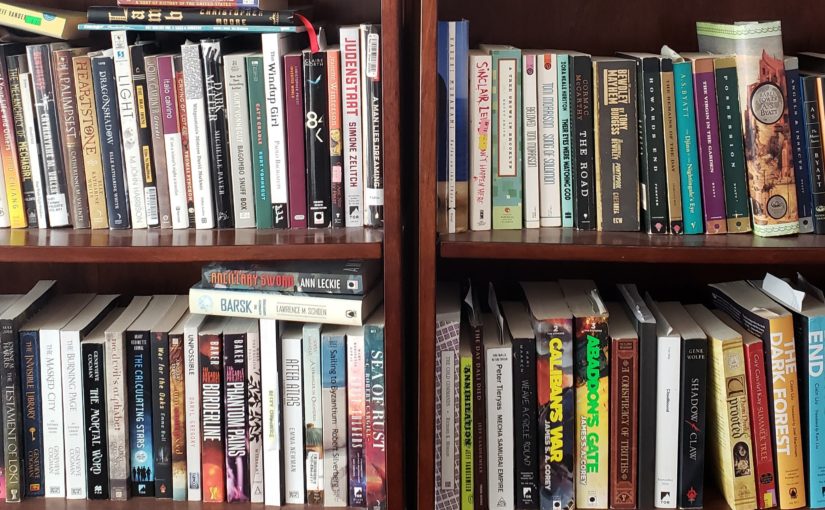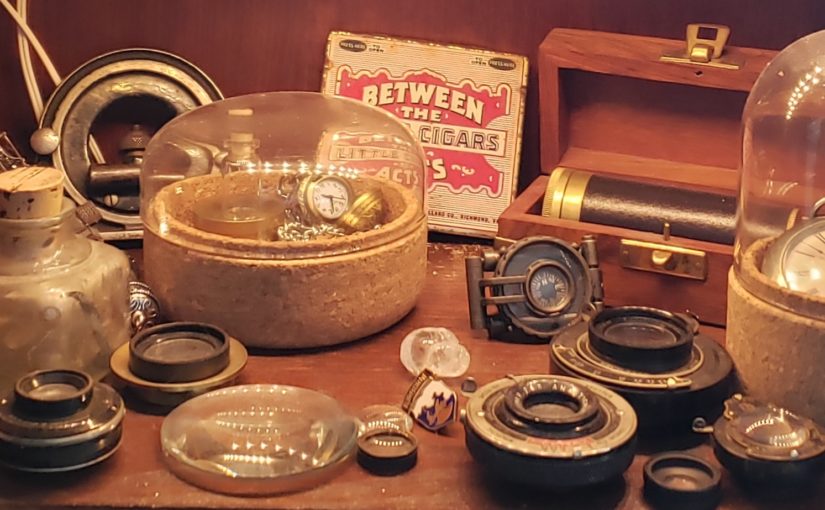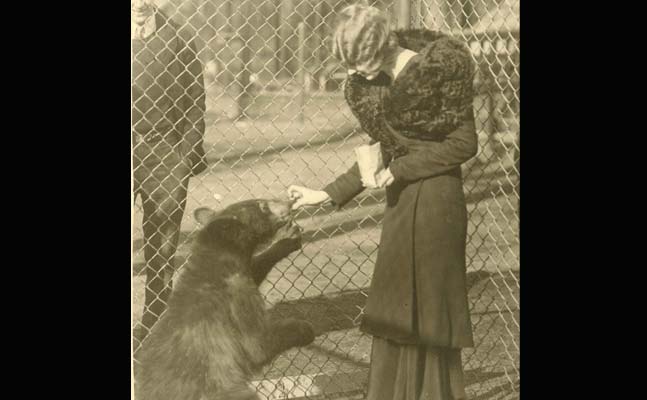As we approach the new year, I feel like it’s customary to look back and castigate ourselves on not learning French or how to knit or whatever, and promise to do better next year. I probably will never learn French or how to knit, but I will likely continue to read a lot. There isn’t any particular theme to my reading, but there can be clusters of interest. As always, there’s a disproportionate number of books which are zombie or zombie-adjacent narratives. I also seemed to gravitate to lighter Star Trek/Wars-y space opera this year. And if last year was the Year of Seanan McGuire, this year was The Year of Martha Wells, which kind of crept up on me. She was guest at Minicon, so I started reading her stuff to get more out of her panels, and then just never stopped. I also feel like I did more audio this year, although maybe it just feels like it because of the commute.
So here’s an incomplete summary of what I’ve read this year.
Zombruary: February was given over to reading zombie books, like usual, but then of course I read a bunch more as the year went on.
- Devils Wake by Tananarive Due and Stephen Barnes. A bunch of juvenile delinquents try to ride out the zombie apocalypse in a summer camp outside of Seattle. Excellent dialogue and a well-rounded cast elevate a familiar early outbreak narrative, plus mushrooms are going to kill us all. I never read the sequel, but maybe this Zombruary.
- Hollow Kingdom by Kira Jane Buxton. Also set in the PNW, this zombie outbreak is narrated by a pet crow, which sounded delightfully strange. It has potential, but bogs down horribly in the middle with a lot of flashy, overwritten prose which doesn’t do anything, and I’m still mad about the death of that one character.
- Last Ones Left Alive by Sarah Davis-Goff. I’d read this before and enjoyed it, but then also really didn’t understand what happened at the end. I’ve always said zombie stories are especially attuned to location – at least as much as mysteries, if not moreso – and Last Ones Left Alive is very, very Irish. Orpen is raised off of the West coast of Ireland on an island free of the skrake; she has to go to the mainland once her mother is killed and her other mom bitten. I still don’t know what happened at the end, but at least the sequel came out this year so that might answer that.
- Handling the Undead by John Ajvide Lindquist. Lindquist burst onto the scene with his take on vampires in Let Me In; here he tackles the reanimated dead. There’s a lot of nice stuff in here about how the return of loved ones would disrupt the grieving process and complicate the relief of death, and several sequences that gave me the screaming fantods – the bath, that eel – but the novel unfortunately falls apart in the end.
- Eat Brains Love by Jeff Hart. Rompy YA novel with two pov characters: a just-turned zombie – the kind that look totally normal if they keep eating people – and a teenaged psychic who is part of a government team that puts down zombie outbreaks. The sort of Sleepless in Seattle-style romantic subplot did not work, but otherwise the plot zips along with enough action and humor to keep you from nitpicking.
- Zombruary was over when I listened to Zone One by Colson Whitehead again. Boy, but I love that novel, which is weird, because it’s aggressively literary and absolutely unconcerned with genre, if you take my meaning. A depressed guy moves to New York, like he always dreamed of doing, and it doesn’t help the depression one bit. With zombies.
- Everything Dies by TW Malpass. Complete opposite of Zone One: totally pulpy and genre-bound to a fault. It’s fine, but I am absolutely sick to death of cartoon bad guys threatening sexual assault to prove the situation is serious.
- The Rise of the Governor by Robert Kirkman and Jay Bonansinga. Remember that thing I just said about sexual assault? Well, strap the fuck in. Maybe, maybe this could have worked if it was a portrait of Phillip Blake — aka The Governor, early antagonist to Rick Grimes and the Rickocrats — largely through the lens of his younger, bullied brother, Brian. But then, plot twist! Brian takes Phillip’s name at the end, after his brother finally, deservedly gets his head blown off. This means I’ve read through several hundred pages of some asshole raping and murdering his way through the zombie apocalypse, only to have an eleventh hour protagonist switch which gives me zero insight as to how Brian turns into the Governor. I mean, I think I’m supposed to postulate some sort of dissociative PTSD-induced DID, but that’s fucking stupid and not how any of this works. Ugh.
- The Investigation by Stanislaw Lem. Corpses of the newly dead start getting up and walking out into the snow; after an interval of less than a day, they fall down dead again. Set in 1950s England, The Investigation is something like a satire of the police procedural crossed with a Gothic novel, and as those are almost completely antithetical genres, it’s occasionally brilliant but often confusing. (The time displacement is a thing too; it’s been 65 years since this novel was written, and I found a lot of the social mores perplexing.) It’s still Lem though, so funny in a desert dry way and brisk enough to tug me along to the end, even if I didn’t always get what was going on.
- Empire of the Dead by George A Romero. No one told me Romero wrote comics! Y’all are on notice. Set loosely in the “…of the Dead” universe, Empire of the Dead asks, but what if vampires too? This leads inevitably to existential questions re: the various kinds of undeath, some of which are dealt with hilariously. It is set in a very stupid classic dystopia tho, which I did not enjoy.
Various Series..es I Continued or Reread: I feel like I have an escalating number of series that I either haven’t finished or the author is still putting out installments, which isn’t helped at all by the fact that I have a tendency to wander away about two books into any given trilogy.
- Wolfhound Empire by Peter Higgins. I read the first installment, Wolfhound Century, a dozen years ago when it came out, but then never followed up. I listened to that and the sequel, Truth & Fear, to and from work, and then discovered, to my eternal irritation, that the final installment was never read out as audio. Really cool steampunky alt-historical take on the Soviet Union, with a side of eldritch horror. I guess I’ll have to read the third.
- I also listened to the entire Southern Reach trilogy by Jeff VanderMeer — Annihilation, Authority and Acceptance — which is an excellent audio. (Bronson Pynchot is a stupid good narrator; who knew?) I find that entire series incredibly disquieting, especially the second, and as I said before, mushrooms are going to kill us all.
- Rivers of London by Ben Aaronovich. Urban fantasy set in London with a local historian’s eye towards London history. Really fun, with a cosmopolitan mix sometimes absent from urban fantasy, perversely. My one complaint is the inherent copaganda of a series with a Met copper as the lead, and in reality, the Met police are fucking awful. Managed to get to book two, Moon Over Soho, before I wandered off, but I’m sure I’ll get back to it.
- Galactic Bonds by Jennifer Estep. The first and second of this series, Only Bad Options and Only Good Enemies bracketed the year. Not great! Romance-y space opera set in one of those feudal nightmares one can find in a certain kind of scifi. But I have a thing about mate-bonds and how terrible they are, and this series deals head on with how terrible they are, so. Shrug emoticon.
- Class 5 series by Michelle Diener: Dark Horse, Dark Deeds, Dark Minds, &c. Compulsively read all five of the books in this series in like a minute. They all involve humans abducted and thrown into real Star Trek-y galactic politics. They remind me of Bujold’s Cordelia books, the way they have great escalating stakes for our principles to clever their way out of. Bujold’s probably crunchier, whatever that means.
- Our Lady of Endless Worlds by Lina Rather. I liked the first of this series, Sisters of the Vast Black, better than the second, Sisters of the Forsaken Stars. The overt plot felt a little careworn: I have seen a lot of arrogant, dying empires commit atrocities in pursuit of recapturing their dominion, and might even be said to live in one. But I am a sucker for nifty space stuff, and a group of nuns living on a living spaceship and debating whether to let their living ship go off and mate like it wants to is major nifty space stuff.
- Janitors of the Post-Apocalypse by Jim C. Hines. I read the first two a million years ago when I was writing for B&N, and then kinda forgot about the series. Finally finished the series with Terminal Peace. Hines lost his wife to cancer between writing book two and three, and the tonal shift is apparent: For a comedy, this has a strong current of grief. I didn’t mind, as this series has always had more serious themes underneath all the exploding space toilets. I also have big hearts for eyes for working class heroes, and our post-apocalyptic janitors get really inventive with cleaning products.
- Earthsea by Ursula K LeGuin. Reread both A Wizard of Earthsea and The Tombs of Atuan. Much as I adore A Wizard of Earthsea, the way it dispatches with the monomyth in a tight 200 pages, I was struck by how quietly, perfectly subversive Atuan is. Gah, I just love it all so much.
- Longshadow by Olivia Atwater. The third (and maybe final?) book in the Regency Fairy Tales series, I didn’t love this one as much as the first two, Half a Soul and Ten Thousand Stitches. Gaslamp fantasy in an alt-Regency setting, not dissimilar from Zen Cho’s Sorcerer to the Crown, but interrogating class & disability more than race.
- Witness for the Dead by Katherine Addison. Sort of an adjacent series to The Goblin Emperor, Cemeteries of Amalo is something like a police procedural without the police, but with lots of fun bureaucracy and the occasional ghoul attack. The main character is profoundly grieving, which you don’t figure out for a while, and colors all of his interactions with both the living and the dead. Really fine.
- Resonance Surge by Nalini Singh. Yup, still on my Psy-Changeling bullshit. I reread the previous two, Last Guard and Storm Echo, to try to figure out what was up with the whole Scarab situation, but then I realized I didn’t care. Last Guard is the best of the Psy-Changeling Trinity books to date, imao.
- Murderbot Chronicles by Martha Wells. I’d read them all before, but me and the fam listened to the first six novel/las in this series during long car rides over the year, culminating in the most recent, System Collapse. I just love Murderbot’s bellyaching about how it just wants to get back to its stories. Hard same, Murderbot.
- The Fall of Ile-Rien by Martha Wells. Another series undertaken on the commute to and from work, for the most part. Completely odd series, because while I never felt like I was having my socks blown off or anything during books one & two, The Wizard Hunters and The Ships of Air, but by the time I got to book three, The Gate of The Gods, I was completely invested, and spent more time than I should admit to sitting in the garage after the drive home absolutely freaking out by some upset in the book. Kind of steampunk and sort of gaslamp fantasy, the Edwardian English-ish country of Ile-Rien has been losing badly to a mysterious people they call the Gardier. Honestly, the whole thing is so complicated I couldn’t possibly sum it succinctly. As a clash of empires story, it’s notably grounded in personal perspectives, and never loses sight of how trauma and grief work on both societal and individual levels.
Graphic: I didn’t read a lot of comics/graphic stuff this year. I started maybe a half dozen things, but nothing I wanted to read past the first installment. I feel like I used to have better recommendations on what series to check out, though idk what that was or where it went. Oh well.
- All the Simon Stålenhag. I completely lost my shit over Stålenhag’s loose trilogy, Tales from the Loop, Things from the Flood, and The Electric State. The first two are a sort of oral history from the children who grew up around the Loop, a CERN-like installation in rural Sweden, in the 80s and 90s. The third goes to America and gets a fuck of a lot darker. I just cannot get over the weird mix of credulity and incredulity that one finds in the adult recount of childhood. Plus there’s this line from the movie Nope that I keep coming back to: what do you call a bad miracle? Because each installment, and increasingly, are characterized by bad nostalgia, which like a bad miracle seems a contradiction in terms. Nostalgia is memory without shame. Completely gutting. (The Labyrinth will also fuck you up.)
- No 6 by Atsuka Asano. I’ve been very slowly working my way through this yaoi manga set in a classic dystopia. It’s not amazing, but I’m ride or die for Dogkeeper.
Gothic/Horror/Supernatural: The pandemic kind of messed me up there for a couple years, and I was unable to find much joy in the macabre. But I’m back, baby! Not all of the following books are strictly horror, but they’re all weird in their own way.
- American Elsewhere by Robert Jackson Bennett. I’m very susceptible to horror which takes place in the Uncanny Valley — and if that town nestled in that vale is set dressed in mid-century modern trappings, more’s the better. Mona inherits a house in a town called Wink from her long dead mother. Wink is something like Los Alamos, a town created for the scientists in the facility on the mesa. What those scientists were doing was altogether as awful as the Manhattan Project, but more localized. Underneath all the squirming tentacles and mirrors which don’t reflect the rooms they are in is an intensely sad story of indifferent mothers and damaged daughters. Not my usual reaction to cosmic horror, but here we are.
- Amatka by Karin Tidbeck. Another book I flipped my shit over, just 100% in my wheelhouse. Something like Soviet Noir, but the mystery is the nature of reality, not a murder. I adore a science fictional bureaucracy, and the world here appears to be literally, physically made out of bureaucracy. Solaris by way of The Southern Reach, with a little bit of Wolfhound Century thrown in.
- The Salt Grows Heavy by Cassandra Khaw. I wasn’t in the right mood for this, but forced it, which is a shame all around. I can be on the hook for bloody, beautiful prose that is this side of overwritten (and certainly, for some, would be over the line), and what she does with The Little Mermaid is both upside down and inside out. I might reread when I know I’m in the mood.
- The Little Homo Sapiens Scientist by S.L. Huang. Another retelling of The Little Mermaid with a central inversion. The Little Homo Sapiens Scientist is a gut punch of a story, and gave me the kind of world that I would absolutely kill to see in a larger fiction. Highly recommended.
- Such Sharp Teeth by Rachel Harrison. I kind of can’t believe I’ve never seen a werewolf novel which uses lycanthropy as a metaphor for the body horror of pregnancy before. The voice is pitch perfect aging hipster millennial (and I mean that in a good way): both self assured and self loathing in equal measures, quipping, funny, allusive. And the werewolf parts are gross. That said, I don’t think the ending was altogether successful. It’s not bad, just kinda tonally off, and the revealed antagonist is disappointing. Still, it was an enjoyable read, and sometimes the getting there is worth the end.
- Tender is the Flesh by Agustina Bazterrica. I’ve been desensitized to a certain amount of gore because of my love of zombie fiction, and even then the body horror in Tender is the Flesh was a lot. After an animal-borne pathogen leads to the eradication of everything from livestock to zoo animals to pets, cannibalism is systemized and normalized. Bazterrica is very deliberate in the linguistic distinctions between “special meat” and legally recognized people, and all of the ways those distinctions bend, break, and fail with even everyday stressors. The ending is abrupt, deliberately so, and features violations so intense I literally shuddered. Disgust is a function of both empathy and contempt. Jfc.
- Carmilla by J. Sheridan Le Fanu. I feel like I need to make a tag called “tragic, romantic hair-brushing” for my reading. Just off the top of my head, I would tag this, the Dollenganger books, and The Bloody Chamber by Angela Carter.
- The Fall of the House of Usher by Edgar Allan Poe. Somehow missed this one when I read all my Poe at 16 or so. Completely bugshit; loved it.
- A Night in Lonesome October by Roger Zelazney. There are 31 chapters in Lonesome October to correspond with the 31 days in the month, so I did the thing where I read a chapter a day (mostly). The novel is narrated by a dog and features a cast of Gothic types – vampires, magicians, Sherlock Holmes, &c – and their animal familiars, so it’s definitely on the goofier end of Gothic fiction. Delightful and strange.
- The Scapegracers by HA Clarke. I want to write some quip about how The Scapegracers is like The Craft for Zoomers, but this is exactly the same kind of facile analogy as when people call Lev Grossman’s The Magicians “a grown-up Hogwarts.” It’s not just The Craft for Zoomers; it’s a witchy, queer, neurodivergent coming of age that you didn’t know you needed, but you do.
Various One-Offs: Not everything fits into a neat category! So here’s some stuff that didn’t fit anywhere else.
- Station Eleven by Emily St John Mandel. Speaking of The Magicians, I decided to read this novel because I became completely obsessed with the show adapted from it. I liked the show better, but the book has a lot going for it. Station Eleven is often (but not completely) a post-apocalyptic pastoral, of the type that Ursula K Le Guin or John Crowley or even Kim Stanley Robinson wrote in the 70s and 80s, but haven’t had much traction in our more saturnine times.
- Rosencrantz and Guildenstern Are Dead by Tom Stoppard. Continuing the Shakespeare month I was having, I listened to an audio version of Stoppard’s first play on the way back from seeing the most recent Guthrie production of Hamlet. It’s definitely the work of a young, clever man: brilliant in places, but also completely beset by its own im/mortality in ways the works of older people never are. Weird, that.
- Final Night by Kell Shaw. Could also file this under “zombies,” but that’s not really accurate. Kind of an oddball mix of an alternate present based on some high fantasy fol-de-rol, and an urban fantasy set-up wherein a person has to solve her own murder, 20 years before. Not entirely successful, but then also energetic and interesting enough to keep me reading. I appreciate when people do weird shit with sometimes tired tropes.
- Catfishing on CatNet by Naomi Kritzer. I really, really loved the way Kritzer captured how friendships formed on the internet work, without treating them like lesser order relationships. I doubly appreciated how she captured the familiar/strangeness of meeting someone you’ve only known through a text medium. I haven’t read a lot of YA recently because it makes me feel old, but this was pitch perfect.
- Redshirts by John Scalzi. Honestly, this is the laziest sf book I’ve read since late period Asimov, with exactly the same ratio of casual mastery to dumbass what-the-fuckery. Fans of Scalzi’s writing will find this the kind of thing they like; the rest of us end up with a stress-response to dialogue tags, because literally every single utterance has one, something which becomes unavoidably obvious when you, say, listen to the audio.
- A Dead Djinn in Cairo by P. Djèlí Clark. Neat little short story set in an alt-history Egypt, one in which the world-building is a central character. I keep meaning to read the other fictions set in this world.
- The Fellowship of the Ring by JRR Tolkien. It’s been a minute since I’ve read this, long enough that some of the movie-stuff got set as book-stuff, so it was nice to course correct. It’s such a flex to spend just ages talking shit about hobbits before ever getting into the story at all, and then when you do, it’s another age of Frodo mooning about the Shire doing a lot of tragic, romantic hair-brushing (another for the tag??) Andy Serkis does a damn fine job as narrator.
Currently Reading: I’m still working on a couple things.
- The Reformatory by Tananarive Due. Historical horror set in a reformatory in Jim Crow Florida. Due has a really beautiful prose style, which is good, because the relentless cruelty the main characters are subjected to is painful. The novel is dedicated to an uncle who didn’t make it out alive.
- Ghosted by Amanda Quinn. A gender-switched contemporary take on Austen’s Northanger Abbey which so far is pretty cute. The main character is Hattie Tilney, whose mom is the emotionally distant headmaster of a boarding school. It’s a little over-determined — the theme is ghosts, and a lot — but I’m really digging Hattie’s barely-maintaining overachiever and her shitty, transactional friends. I’m really curious how she’s going to manage the last bit in OG Northanger, where Gen Tilney turns Catherine Morland out like an asshole.
- Exit Ghost by Jennifer R Donohue. Another gender-flipped take on the classics, this time Hamlet. Not as far into this one, so I have less to say, but I really loved what she did with the ghost-on-the-battlements scene.
So! That, as they say, is that.
(Here’s my roundups from 2022 and 2020; 2021 was difficult.)



.jpg)



